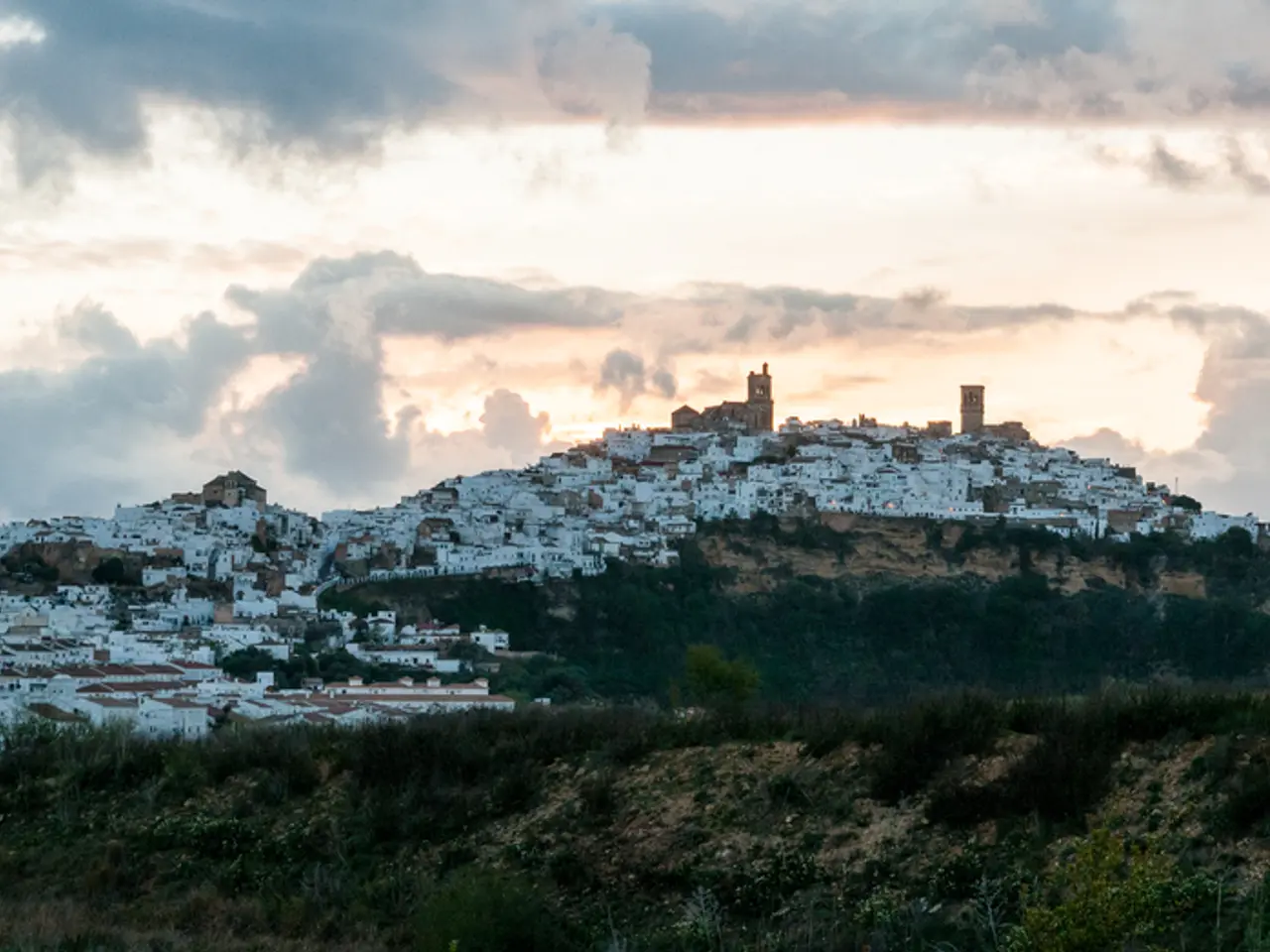Uncovered: 7 Mythical Ancient Cities Remaining Elusive Despite Search
In the realm of myths, legends, and symbolic narratives, several cities have captivated the imagination of people for centuries. Among them are Atlantis, the Lost City of Z, Shambala, Aztlan, El Dorado, Camelot, and Lemuria. While these cities hold a mystique that continues to intrigue, the question remains: do they exist in reality or are they mere figments of the human imagination?
**Atlantis**
The story of Atlantis originates primarily from Plato's dialogues Timaeus and Critias, where he describes a powerful island civilization that existed about 9,000 years before his time, located beyond the Strait of Gibraltar. According to Plato, Atlantis was destroyed by earthquakes and subsequently swallowed by the sea. Despite numerous theories, no concrete archaeological or geological evidence has been found to confirm Atlantis as a real place [1][3][4]. Some scholars speculate that Plato's tale might have been inspired by the catastrophic volcanic eruption on the island of Thera (Santorini) around 1500 BCE, which devastated the Minoan civilization—this event could have influenced the Atlantis narrative [1][3]. However, many consider the story a philosophical allegory about hubris rather than historical fact [3].
**The Lost City of Z**
Unlike Atlantis, the Lost City of Z refers to an actual historical quest. British explorer Percy Fawcett claimed in the early 20th century to have found evidence of an advanced city in the Amazon rainforest. Despite many expeditions, no definitive archaeological site matching Fawcett's descriptions has been confirmed. However, the Amazon region has revealed numerous pre-Columbian settlements, indicating complex societies once flourished there. The existence of the Lost City of Z remains unproven but plausible given archaeological findings in the Amazon.
**Shambala**
Shambala is a mythical kingdom in Tibetan Buddhist tradition, portrayed as a hidden realm of peace and enlightenment. It is primarily spiritual and symbolic, and no historical or archaeological evidence supports its physical existence.
**Aztlan**
Aztlan is the legendary ancestral homeland of the Aztec people, mentioned in Aztec codices. It is described as a place from which the Mexica people migrated to the Valley of Mexico. Its exact location remains unknown, and it is considered more mythological than historical, though it may correspond to a real region lost to time.
**El Dorado**
Originally meaning "The Golden One," El Dorado evolved into a mythical city or kingdom rich in gold. It was based on indigenous legends and fueled Spanish explorers' quests. Despite many searches, no such city has been found, but the legend was inspired by indigenous cultures and the wealth of gold artifacts in pre-Columbian South America.
**Camelot**
Camelot is the legendary court of King Arthur, rooted largely in medieval literature rather than verifiable history. While some archaeological sites in Britain claim connections to Arthurian legends, there is no definitive historical evidence for Camelot’s existence as described in the stories.
**Lemuria**
Lemuria is a hypothetical lost continent proposed in the 19th century to explain biogeographical puzzles, particularly in the Indian Ocean region. It is not supported by modern geology or plate tectonics, and no evidence supports its actual existence. It is now regarded as a pseudoscientific concept.
In conclusion, the majority of these legendary cities lack direct historical or archaeological evidence and are best understood as myths, allegories, or symbolic narratives, except for regions like the Lost City of Z, which intersect with ongoing archaeological inquiry but remain unconfirmed. Atlantis remains one of the most famous and debated legends, but its existence is not supported by hard evidence and may be a philosophical or literary creation inspired by real ancient events such as the Thera eruption [1][3][4].
*Note: The table below provides a summary of the historical and archaeological evidence for each city.*
| Lost City | Historical/Archaeological Evidence | Status | |--------------------|-----------------------------------------------------|--------------------------------| | Atlantis | No concrete evidence; possibly inspired by Thera eruption | Likely allegory/myth | | Lost City of Z | No confirmed city; Amazon shows complex societies | Unproven but plausible | | Shambala | Spiritual/mythical realm, no physical evidence | Mythical/spiritual | | Aztlan | Mentioned in Aztec codices, location unknown | Mythological/legendary | | El Dorado | Inspired by indigenous legends, no city found | Mythical/legendary | | Camelot | Legendary court, no archaeological proof | Literary/mythical | | Lemuria | Disproven by geology, no scientific support | Pseudoscience/myth |
[1] https://www.britannica.com/topic/Atlantis [2] https://www.britannica.com/topic/Lost-City-of-Z [3] https://www.britannica.com/topic/Atlantis/The-Atlantis-story [4] https://www.britannica.com/topic/Lost-City-of-Z/The-Lost-City-of-Z-expeditions
- Books delving into the history of Atlantis often spark discussions about its reality, as most theories are founded on Plato's dialogues Timaeus and Critias, where an ancient island civilization, lost over 9,000 years ago, is described.
- On the other hand, the Lost City of Z refers not only to a myth but a historical quest led by explorer Percy Fawcett in the early 20th century, who claimed to find evidence of an advanced city in the Amazon rainforest.
- In the realm of ancient civilizations, the legend of Shambala, a mythical kingdom of peace and enlightenment in Tibetan Buddhism, holds no substantial historical or archaeological evidence of physical existence.
- Similarly, Aztlan, the ancestral homeland of the Aztec people, remains an elusive location, mentioned in their codices, though it may correspond to a real region lost to time.
- El Dorado, the golden city, was inspired by indigenous legends and motivated Spanish explorers' searches for wealth, yet no such city has ever been found.
- Camelot, the legendary court of King Arthur, creates a fascinating intersection of fiction and history, with some archaeological sites in Britain claiming connections to Arthurian legends, but no definitive evidence for its existence as described in stories.




